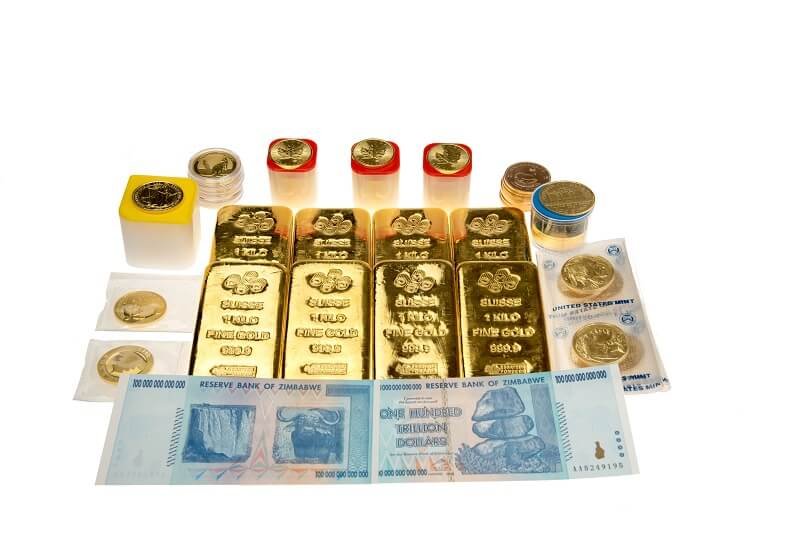15 Feb 2019
From The Gold Telegraph:

People have been obsessed with gold since the beginning of civilization. Both the Egyptians and ancient Greeks valued the precious metal as a status symbol. The more gold you had, the higher you ranked in the natural order of things. In more recent times, gold rushes in Alaska and South Africa have caused major frenzies while changing lives.

People have a natural affinity for shiny things, which makes them desire gold and silver for its beauty. Especially gold, which is a simple, fairly boring metal that can be melted and formed into any desirable form. In many struggling countries, such as India, even the poorest citizens crave gold jewelry.
Prior to paper currency, the actual precious metal was used in trade. A certain amount of gold was assigned a certain value and used in exchange for some other commodity. Since gold and silver were easy to carry, the system worked well, involving the trade of equal commodities.
When governments began to mint currencies, gold and silver became natural choices. Their very rarity, especially gold, gave them an inherent value. People could trust the value of gold and silver. Slowly, however, beginning in the 1930s, world governments were no longer linking their currency to gold. The US dollar stopped being backed by gold in the 1970s. Instead of being backed by true value, word currencies became pieces of paper.
The role of gold changed from a trusted trading currency to a safe investment haven. Investors rely on the fact that while the value of paper currency will fluctuate, gold and silver will hold their value. Precious metals require no guarantees. As currencies lost their gold-backing, global central banks began purchasing and hoarding gold as a reserve currency whose value has been recognized throughout history.
In additional to reserve currency, gold and silver are also used in jewelry, creating another demand for precious metal. While platinum, silver, and copper are also considered precious metals, gold has retained its status as a form of money. It doesn’t tarnish, corrode and is indestructible; all the gold that has ever been mined is still in existence. Gold has a permanence few other commodities have.
According to the World Gold Council, the amount of gold mined throughout history totals over 190,000 tons. Approximately two-thirds of this gold has been mined since the mid-20th century.

This additional gold supply, however, does not meet the global demand for gold. Twenty-five percent of gold is sourced from recycling, and most of that is used for jewelry and electronics. Mining new gold is expensive and can take decades, so recycled gold becomes extremely important. It is uncertain how much gold there is left to extract, although the US Geological Survey estimates the amount to be 57,000 tons. The fact that the available amount of gold is extremely finite means that its price will only rise.
With the price of gold being mostly independent of economic forces, investors believe it is an excellent hedge against a fluctuating stock market and volatile paper currency. The more uncertain the political and economic situation, the more attractive gold becomes as it increases in value. Investors want gold as a hedge against inflation and economic turndown. When the U.S. dollar, which is still the global reserve currency, weakens, the price of gold rises. While the price of silver is much lower than gold because of its greater availability, it, too, serves as a hedge against economic turmoil.
In 2018, central banks held 12 percent of all existing gold, around 33,000 tons. Their gold purchases have risen drastically since the 2008 financial crisis. The US Federal Reserve Bank currently holds $310 billion worth of gold.
Although currencies are no longer backed by or linked to gold, the gold held by central banks is referred to as monetary gold. These assets are not owned by the central banks but held in reserve for their respective countries for financial security. Central banks, such as Germany’s Deutsche Bundesbank and Austria’s Oesterreichische National Bank, value gold’s liquidity during economic downtimes. Gold makes excellent collateral, especially in emergencies. Both banks have recently repatriated gold held in foreign countries. Gold can help isolate a country from other countries’ financial woes, which is one of the reasons central banks around the world are hoarding as much as possible of the precious metal.
The Bank of England serves as the official agent for HM’s Treasury and acts as its gold reserve custodian. It also serves as storage for the gold of many other central banks. The beauty, and ultimate value, of gold, is that it cannot ever be defaulted on or frozen the way currencies can.
Global central banks not only want gold for crisis situations, but the inclusion of gold in their portfolio also provides for stable investment diversification. Gold is highly liquid and can be easily used to raise money. In addition, it is the only asset that holds no counterparty risks.
Gold is golden. Our ancestors knew this thousands of years ago.
Read more at original source: